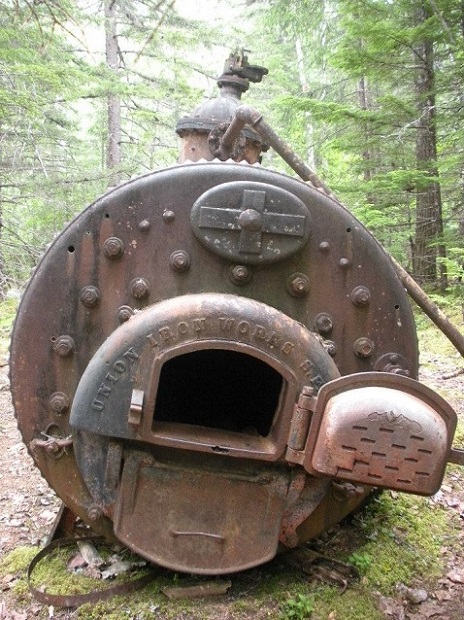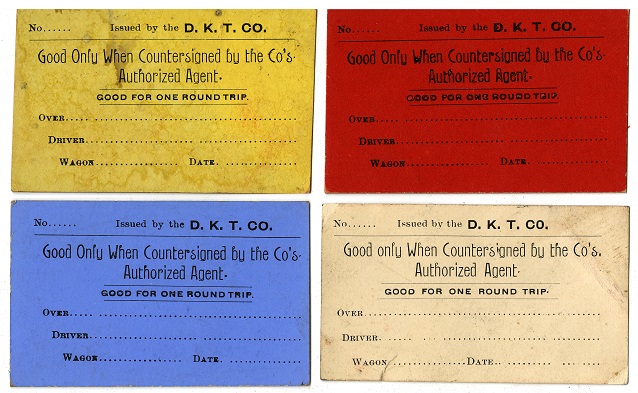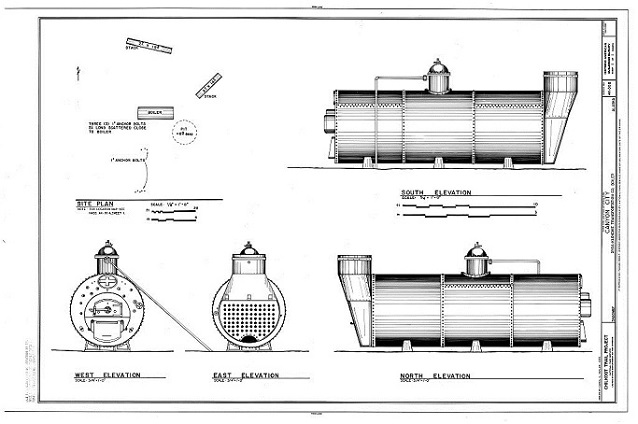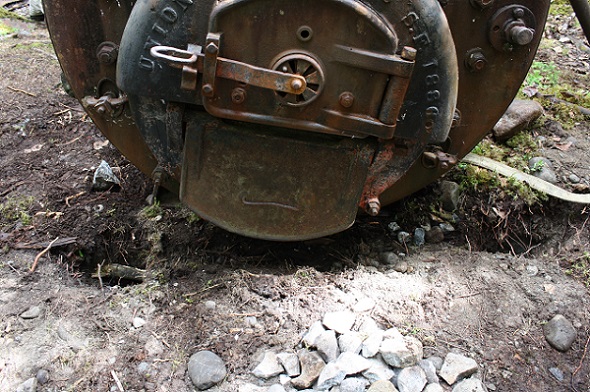Not far from the Canyon City campground on the Chilkoot Trail rests a large steam boiler, out of place in the forested landscape. It serves as a reminder of the innovation and determination of the Gold Rush era.

NPS photo
What is it?
This artifact is a steam boiler, abandoned after the Klondike Gold Rush
Where is it?
The boiler is located just off the Chilkoot Trail in the center of the historic Canyon City townsite. It is visible from the loop trail that runs through the ruins of the historic townsite, located a ½ mile from the Canyon City Campground.
Description
This iron steam boiler was constructed at the Union Iron Works in San Francisco in 1886. It is 16’ long x 5 ½’ diameter and is set on six piers (14” in length). It weighs 50 tons.

NPS Photo
More about the boiler
The boiler powered the Dyea-Klondike Transportation (DKT) Company tramway. DKT was one of three aerial tramways built along the Chilkoot Trail. These trams aided the stampeders in carrying their ton of goods over the border into Canada. Plans for this tramway began in September 1897, at the start of the gold rush. They included a three step process: a dock in Dyea to receive goods, a "narrow gauge tramroad with cars like those used in the mines" to continue into the pass, and an aerial tramway to complete the last leg up to the summit. In preparation, the boiler was hauled by wagon up the riverbed to Canyon City.
The boiler is constructed of flat-rolled iron plates that were formed and hand-riveted together. It is an elongated cylinder, one side ending with a front flue and the other with a firebox door and damper. The boiler functions by heating water into steam, and is equipped with a steam dome, smoke stack, and flue holes. An angled connector pipe extends out of one side of the steam dome into the ground. The boiler provided power for the tramway, equipment, and electric lights in tandem with an electric generator called a dynamo. Though the boiler remains in Canyon City, the dynamo was removed at the end of the gold rush.

National Park Service, Klondike Gold Rush National Historical Park, George and Edna Rapuzzi Collection, KLGO 59344. Gift of the Rasmuson Foundation.
After running into financial issues and facing competition from similar operations, DKT scaled back their plans for the tramway, instead carrying goods by horse up the lower part of the trail and building an aerial tram from the Scales to the summit of the Chilkoot Pass. This bucket-type tramway opened in March 1898 and was powered by a seven mile long power line extending from Canyon City to the power plant at the Scales. It had the distinction at the time of being the only tramway in the world operated by electricity. Later that June, after DKT merged with its two competitors, the Alaska Railroad and Transportation Company and the Chilkoot Railroad and Transport Company, the White Pass and Yukon Route Railroad purchased the trams to prevent competition with the railway. White Pass removed most of the equipment along the trail; however, former DKT cashier George Teal still held a mortgage on the equipment, which meant the White Pass couldn’t remove everything. Fortunately, this caused some equipment to be left behind, allowing visitors to the Chilkoot Trail to view remains of the DKT tramway to this day.

Photo courtesy of Historic American Buildings Survey
By 1899, Canyon City was in decline and most of the town had been dismantled, including DKT facilities. The large steam boiler was unable to be moved more than a few feet off its base, so it remained amongst the town ruins. The boiler sat undisturbed until 1979, when Caroline Carley conducted the first archeological survey of the Chilkoot Trail for Klondike Gold Rush National Historical Park. Since then, archeologists have been monitoring the boiler for adverse impacts. While the boiler itself is in fairly stable condition, the earth beneath it has started to slump, which will eventually cause the boiler to roll out from its base supports. By monitoring the boiler, archeologists can take extensive notes over time, ensuring data is not lost if the artifact is damaged.

NPS photo
When archeologists monitor artifacts instead of collecting them, they can be observed in situ, or in their original places. Gold rush artifacts make the Chilkoot Trail a unique outdoor museum, so please remember to leave them undisturbed if you visit.
Last updated: October 26, 2021
